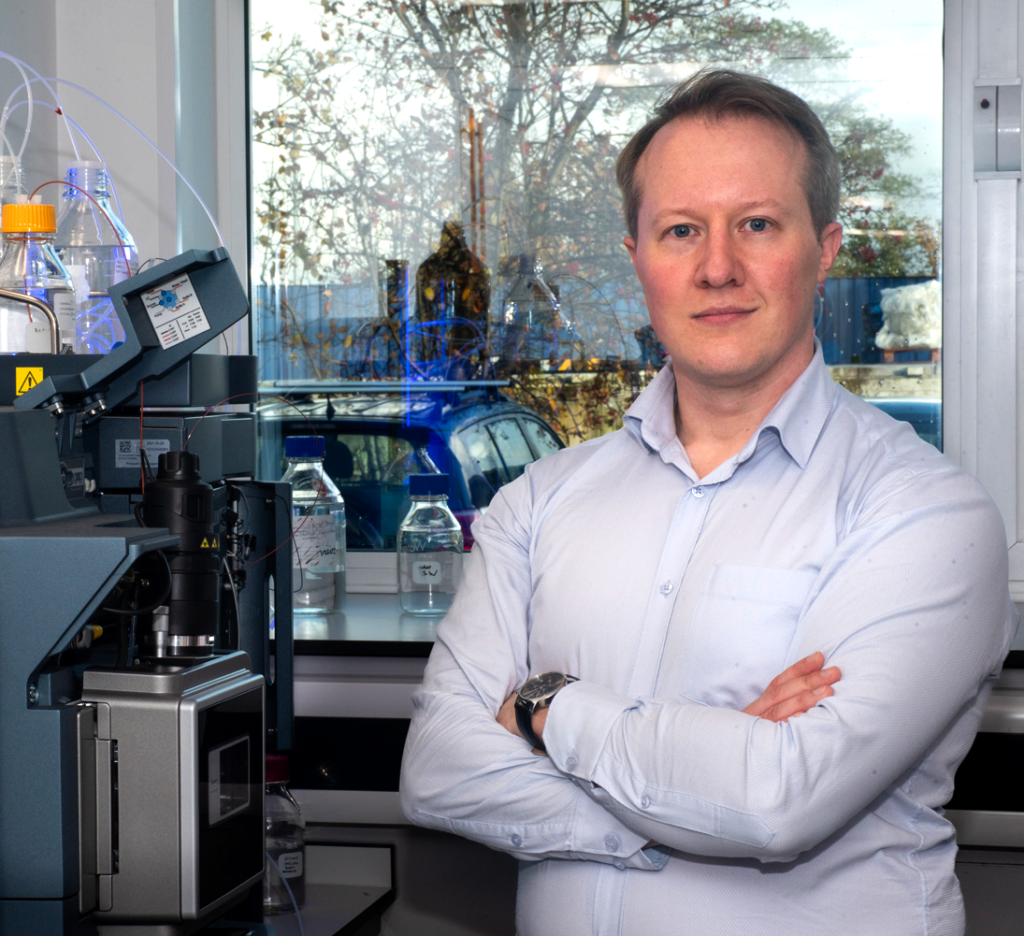‘Getting the dose right’ – A blog by Dr Jan Hansel
Dr Jan Hansel is a National Institute for Health and Care Research (NIHR) Academic Clinical Fellow in Intensive Care Medicine at Wythenshawe Hospital, part of Manchester University NHS Foundation Trust (MFT).
As part of World Antimicrobial Awareness Week (18 to 24 November 2023), Jan discusses the importance of therapeutic drug monitoring in limiting the development of antimicrobial resistance (AMR) and the new TDM-TIME study which he is leading as Principal Investigator at MFT.
Antimicrobial resistance
The time may come when penicillin can be bought by anyone in the shops. Then there is the danger that the ignorant man may easily under-dose himself and by exposing his microbes to nonlethal quantities of the drug make them resistant. Here is a hypothetical illustration. Mr. X. has a sore throat. He buys some penicillin and gives himself, not enough to kill the streptococci but enough to educate them to resist penicillin. He then infects his wife. Mrs. X gets pneumonia and is treated with penicillin. As the streptococci are now resistant to penicillin the treatment fails. Mrs. X dies. Who is primarily responsible for Mrs. X’s death?
Sir Alexander Fleming, 1945
The misuse and overuse of antibiotics in recent years means they are becoming less effective. According to a recently published systematic review by The Institute for Health Metrics and Evaluation, it is estimated that in 2019 alone, almost five million people worldwide died as a consequence of antimicrobial (antibiotic) resistance. World Antimicrobial Awareness Week highlights the need to prevent antimicrobial resistance.
Alexander Fleming, who fortuitously discovered penicillin almost 100 years ago at St Mary’s Hospital in London, warned of the development of resistance from improper use and dosing in a Nobel Lecture within twenty years of his life-saving breakthrough.
Fast forward to the present day, we are grappling with multi-drug resistant bacteria (bugs) that are difficult to effectively treat, and continue to develop new mechanisms of resistance. This means patients infected with these bacteria fare worse when they become ill, but also sets up future generations for a more challenging task to fight the threat of AMR.
In order to curb what is fast becoming a public health emergency and a growing risk to global health and safety, a lot of work is already underway. Part of these efforts involve revisiting Alexander Fleming’s words of caution, and getting the dose right. Ultimately, we want to ensure our patients get just the right amount, not too little and not too much. However, this is dependent on an array of factors to do with how the body processes the drug, what effects the drug has on the body, and to make it even more complicated – what the bugs do to both.
Advanced techniques for measuring substances in human tissues have revolutionised this field of medicine and hold promise for improved precision approaches. In clinical practice this is termed therapeutic drug monitoring (TDM); allowing clinicians to change antibiotic doses based on measured levels in the bloodstream. However, the cost of equipment and highly skilled personnel means that results are often delayed by up to 36 hours from starting the actual treatment.
Critically ill patients with severe respiratory infections and sepsis are extremely vulnerable and require timely treatment in order to survive.
However, up to 40 per cent of patients worldwide are underdosed even when correct formulary doses are prescribed and given by clinical teams*. The most common reasons for underdosing are to do with how the body processes the drugs; leaky capillaries and increased removal through the kidneys both change the amount of drug available where it needs to be.
TDM-TIME study at MFT

Later this month, the TDM-TIME (Therapeutic Drug Monitoring – Targeting IMproved Effectiveness) study will open at MFT, funded by NIHR Manchester Biomedical Research Centre (BRC) and supports one of the work programmes within the Manchester BRC’s Respiratory Medicine theme.
We aim to recruit 30 participants to the study over the next four months (until March 2024), who are currently being cared for in the Acute Intensive Care Unit or Cardiothoracic Critical Care Unit, both at Wythenshawe Hospital.
TDM-TIME is an observational study, meaning we will not change anything about the treatment of our patients, and we will only be measuring levels of antibiotics in their blood.
Blood samples collected from patients early in the course of treatment will be processed in real-time in a new, state-of-the-art laboratory also on-site at Wythenshawe Hospital.
We are hoping our study will demonstrate that by using therapeutic drug monitoring, we will be able to deliver actionable results to clinicians within the first day of antibiotic treatment. While this is a feasibility study exploring whether such research can be effectively delivered at our site, future work will provide evidence on precision approaches to treating these vulnerable patients.
New Laboratory to help combat AMR
The NIHR Centre for Precision Approaches to Combatting Antimicrobial Resistance Laboratory opened this year at Wythenshawe Hospital, supported by the UK Department of Health and Social Care’s commitment in the fight against antimicrobial resistance.
Samples from the TDM-TIME study will be processed using liquid chromatography and tandem mass spectrometry (used for measuring concentrations of substances in fluids), in the newly refurbished laboratory, which will be key in us understanding how quickly we can process the samples and provide meaningful results.
With its growing technologically enabled research infrastructure, MFT is building on its legacy and leading the way on precision diagnostics in severe respiratory infections.

Dr Jan Hansel with the mass spectrometer in the laboratory.
For me, as a pre-doctoral researcher completing my NIHR fellowship, it is a privilege and an exciting opportunity to serve as Principal Investigator for a MFT sponsored study that I designed, under the exceptional guidance of Dr Tim Felton, Consultant in Intensive Care and Respiratory Medicine at MFT and Senior Clinical Lecturer at The University of Manchester.
The data gathered through TDM-TIME will allow me to prepare a stronger doctoral fellowship application to develop my own distinct research profile. I am hopeful that through my research work, tailoring interventions to each individual, future patients will benefit with improved outcomes.
Next steps for antimicrobial research
We hope the findings of TDM-TIME will provide us with a clear signal to continue our work with therapeutic drug monitoring. We are planning to study the collected samples to explore how subgroups of patients react to the antibiotics. Genetic and immunological diagnostics may hold the key to understanding these differences and we are partnering with groups at The University of Manchester and Newcastle University to expand on this important work.
The ultimate goal is to be able to deliver a large-scale trial using mathematical modelling approaches to inform precision dosing. Incorporating the findings from TDM-TIME’s analyses and the novel subgroupings will bring us closer to personalising each course of antimicrobial to each patient – and get the dose just right.
If you want to know more or get in touch, follow me @VirtueOfNothing and MFT Research and Innovation on the social media platform X.
*?-Lactam Dosing in Critical Patients: A Narrative Review of Optimal Efficacy and the Prevention of Resistance and Toxicity and Optimization of the treatment with beta-lactam antibiotics in critically ill patients
